Beguiled by Beijing

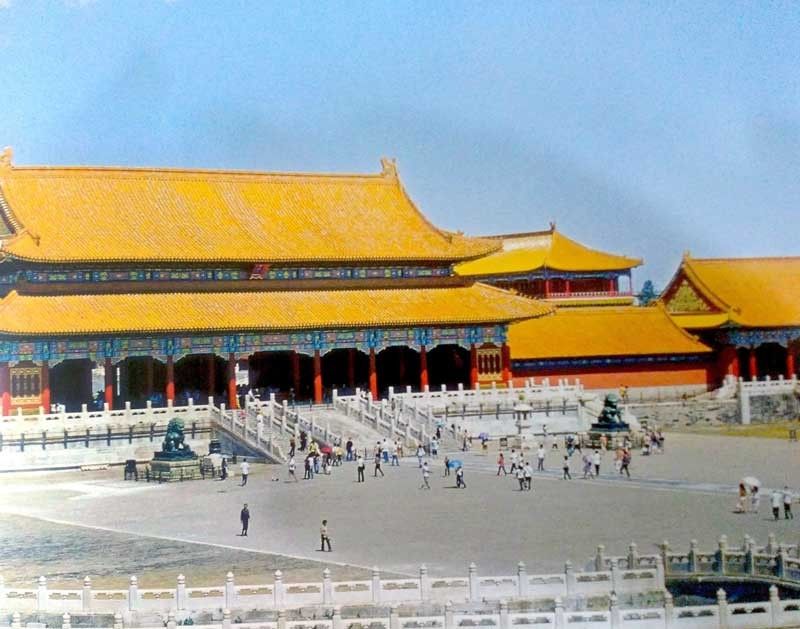
If you look behind the wide boulevards lined with red roses, expansive hotels and high rises, you’ll still find many historical and cultural treasures.
It was love at second sight the minute I arrived in Beijing. But because I did not recognize the city on my second trip here, it felt like falling in love with it for the first time.
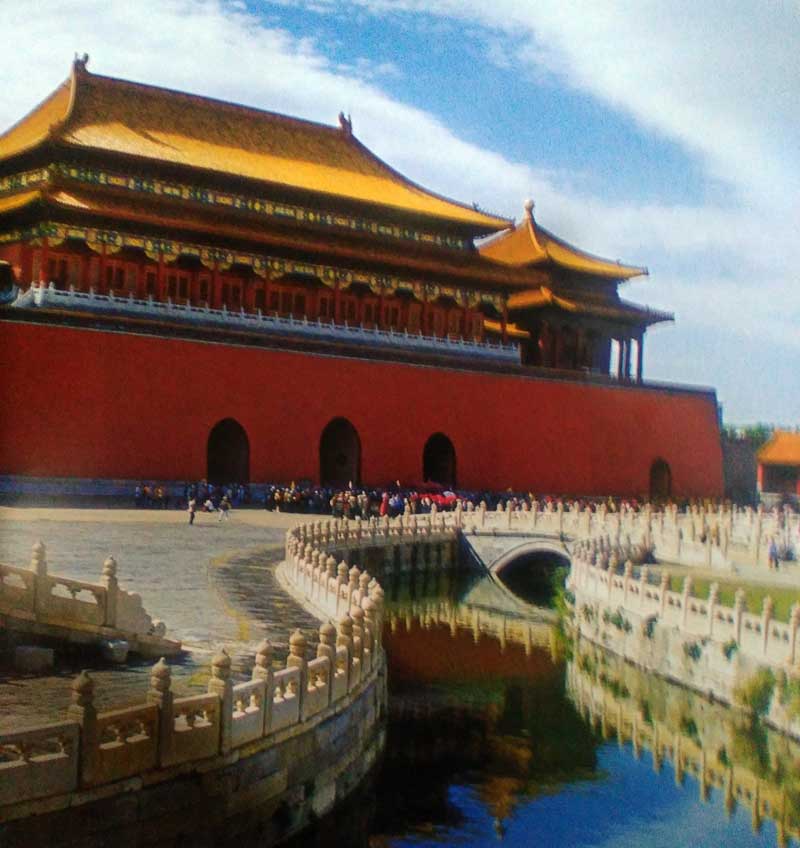
The Forbidden City outer court is one area where foreigners and locals converge.
Much of Beijing is a sprawling metropolis, which can be traveled not just by car but by bike as well. One can see people flying kites in historic Tiananmen Square or throwing Frisbees here and there.
Beijing, the capital of the People’s Republic of China, has undergone terrific modernization in the last 20 years. If you look behind the wide boulevards lined with red roses, expansive hotels and high rises, you’ll still find many historical and cultural treasures. The city is very sophisticated.
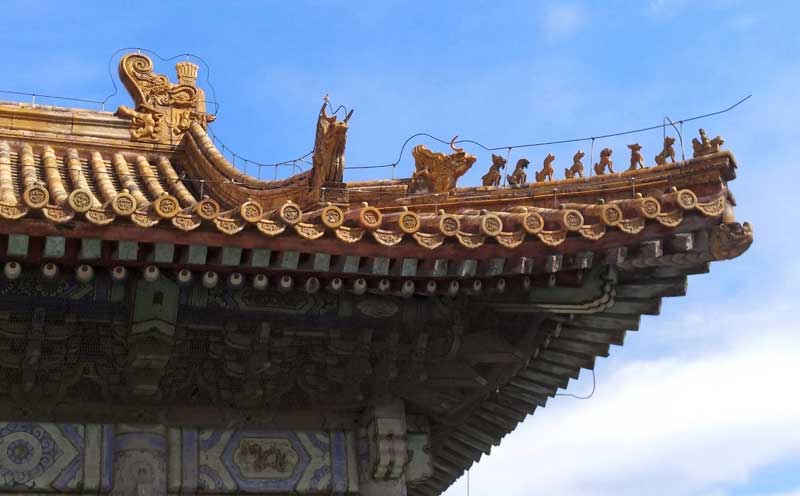
The Emperor Palace Roof design is an attraction in the Forbidden City.
Our trip to Beijing was peppered with happy thoughts and new beginnings. For one thing, I was invited by my two very good friends: Yvette Lee and Reesa Guerrero.
We had barely taken off when Reesa lent me her gray neck pillow, which helped me fall into the arms of sweet slumber on the Philippine Airlines flight from Manila to Beijing.
Our friend Nerissa Zhang, winsome movie producer and avid scuba diver, picked us up at Beijing airport and took us to the Jing Wei Zhai restaurant for delectable Peking duck with skin so crisp and thinly sliced tasty duck meat encased in a delicate flour pancake smothered with sweet hoisin sauce. It was a wonderful treat. We checked in at Hotel Grand Concordia, an elegant hotel with huge well-appointed rooms right in the heart of the city.
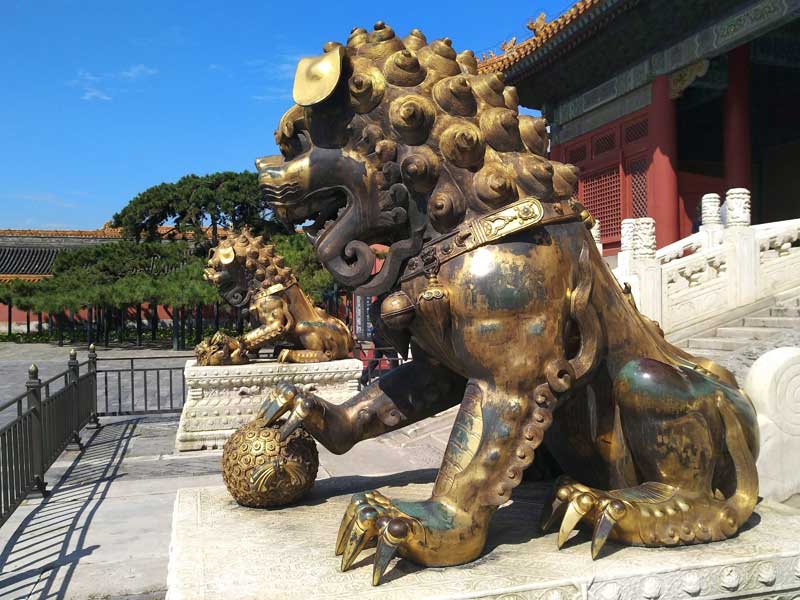
The golden lions in the Forbidden City are a sight to behold.
Proceeding to the nearby city malls Joy City and Solana, Yvette, who loves to cook for family and friends, discovered sesame paste and assorted Chinese ingredients that we happily purchased. Meanwhile, Reesa bought her colored ink sets. A unique trait, Reesa still writes with pen and ink on postcards to her friends around the world. Yvette was so inspired to cook and Reesa was beaming with delight while I bought the best dried mushrooms to make into my favorite sukiyaki.
We then prepared for the Forbidden City — our itinerary for the very next day. It was amazing to realize that at this time, 600 years ago, this kind of construction was possible. It showcases the ingenuity and industry of the Chinese at such an early stage of their history.
Fascinated and intrigued, we were all ears as we learned about the eunuchs and the concubines. The concubines wished the emperor would pick them so that their lives would be changed forever. If chosen by the emperor, they would be gifted with lavish fortunes and their families would be made for life. An interesting feature of the Ming dynasty and principal reason for its decline was the ever-increasing power of the eunuchs who were castrated at an early age to serve the emperor’s harem and concubines.
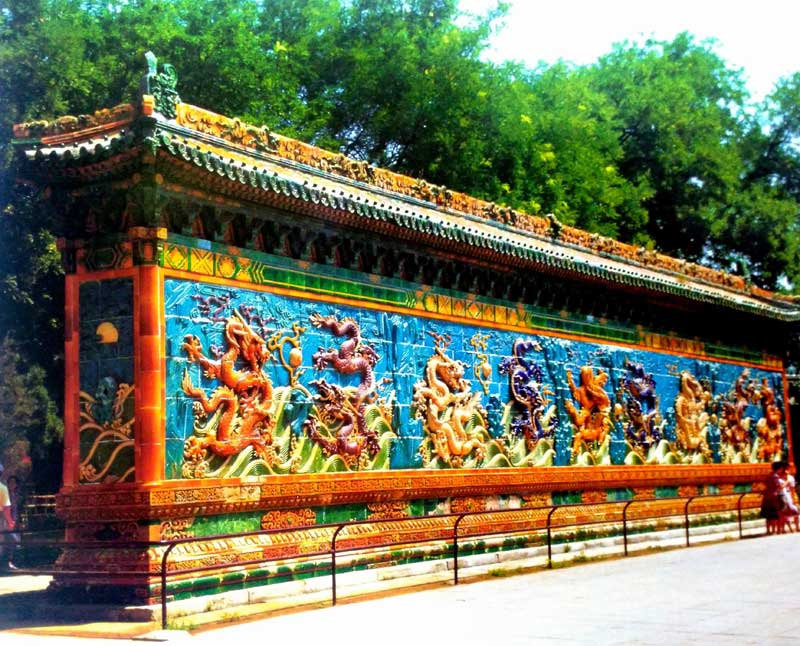
The Nine Dragon Screen is another attraction in the Forbidden city that is worth visiting.
Located in the heart of Beijing, the Forbidden City was built in the fourth year of Emperor Yongle’s reign and completed 14 years later. The Forbidden City was used as the Imperial Palace and housed 24 emperors for as long as 500 years. The grand and majestic complex is the largest and completed wooden cluster in the world today.
The Forbidden City covers a total of 720,000 sqms with a building area of 150,000 sqms. Though repaired and extended in the Ming and Qing dynasties, it retains its original layout. The palace is surrounded by 10-meter-high walls outside, running along the 52-meter-wide moat comprising the defense tower. The name of the Forbidden City is related to the concept of “human and nature in one” in China’s feudal society and ancient philosophy and astronomy. The emperor regarded himself as the son of heaven and the Imperial Palace was called Purple Palace, symbolizing that all is submitted to the emperor and his rule over the country is steady and unchangeable. The Imperial Palace where the emperor lived was heavily guarded and had strict defensive works and was completely forbidden. Thus the Imperial Palace during the Ming and Qing dynasties was called the Purple Forbidden City.
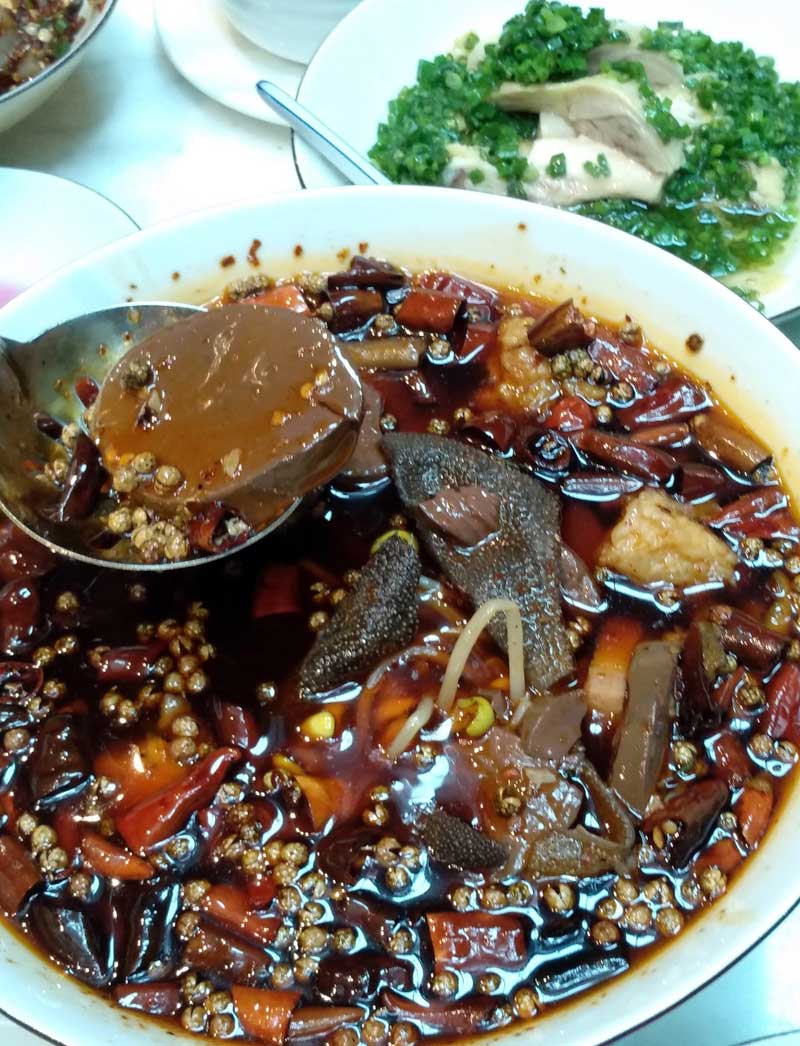
This fiery suchuan stew is a common dish in Beijing.
Around one million relics are showcased in the Palace Museum including ancient cooking and wine vessels, jade, calligraphy and paintings from the Tang, Song, Yuan and Ming dynasties. In 1961, the Forbidden City became one of the key units for preservation of cultural relics. In 1987, it was inscribed into the World Heritage list by UNESCO.
In the south of the square, there are five Inner Golden water bridges. The middle path of the bridge is the most magnificent. There is a row of wing roofs respectively in the east and the west sides of the square. The west rooms were originally where records of law and systems of dynasty were compiled in the Ming Dynasty and were altered into halls to keep records of the emperor’s daily life and translation center for Manchu and Chinese languages.
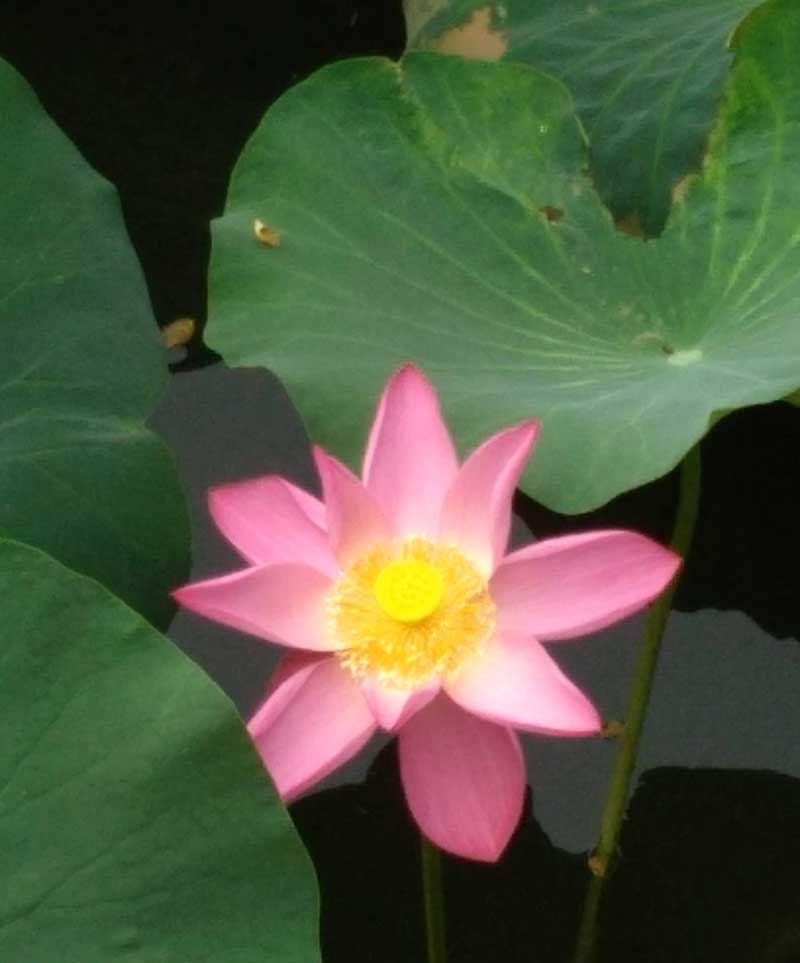
The Forbidden City lotus flower is a sweet sign of life and love.
From the Forbidden City, we proceeded to the Summer Palace. Being the largest and most-well-preserved royal park in China, it greatly influences Chinese horticulture and landscape with its famous natural views and cultural interests, which also have long been recognized as the Museum of Royal Gardens. The lakes, corridors, gardens and palace temples were once the playground for the imperial court.
The Summer Palace was built by the emperor for two reasons. One, he used it as a catch basin to solve the perennial flooding problem during the rainy season. Two, the manmade lake was also built for his mother to take advantage of the lake during the summer months. The emperor never slept here, to demonstrate to his people that it was not meant for his pleasure.
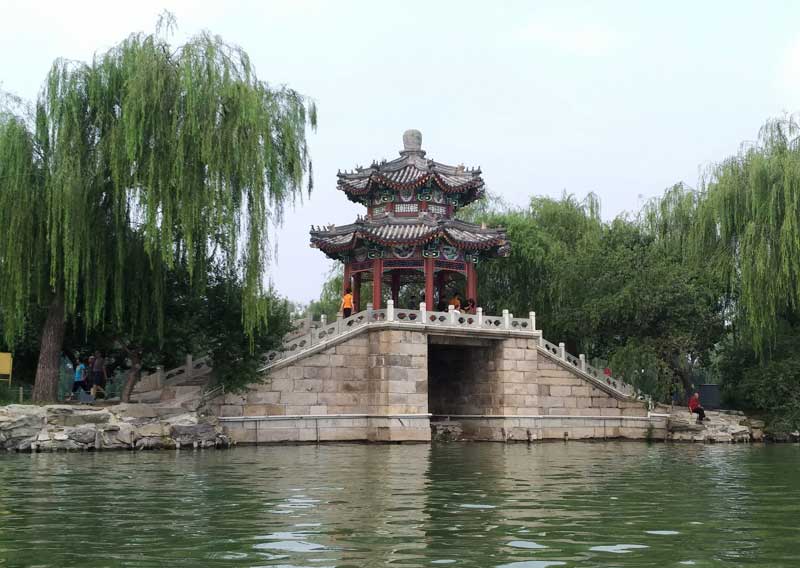
The Summer Palace was created to house the royal gardens.
According to historical documents, the Summer Palace (Yiheyuan), originally called Qingyi Garden (Garden of Clear Ripples), was renamed after its first reconstruction in 1888. It was also recorded that Empress Dowager Cixi embezzled navy funds to reconstruct it as a resort in which to spend the rest of her life. In 1900, Yiheyuan suffered another hit by the Eight-Power Allied Force and was repaired in the next two years. In 1924, it was open to the public. Summer Palace ranked among the World Heritage Sites by UNESCO in 1998. There are over 3,000 manmade ancient structures, which count building space of more than 70,000 sqms, including pavilions, towers, bridges, corridors and more.
On the sunny, morning lakeside boat tour in the Summer Palace with water lilies all around, the clear waters and breezy weather made the experience so exhilarating.
We had red wine and lamb ju bao yuan hotpot for dinner. Thin slices of meat simmered in a spicy broth and dipped in many succulent sauces satisfied our healthy appetites.
Next on our agenda was to see the famous Great Wall, one of the greatest wonders of the world, and listed as a World Heritage by UNESCO in 1987. Just like a gigantic dragon, it winds up and down across deserts, grasslands, mountains and plateaus, stretching approximately 21,196 kilometers from east to west of China. It’s open 365 days of the year.
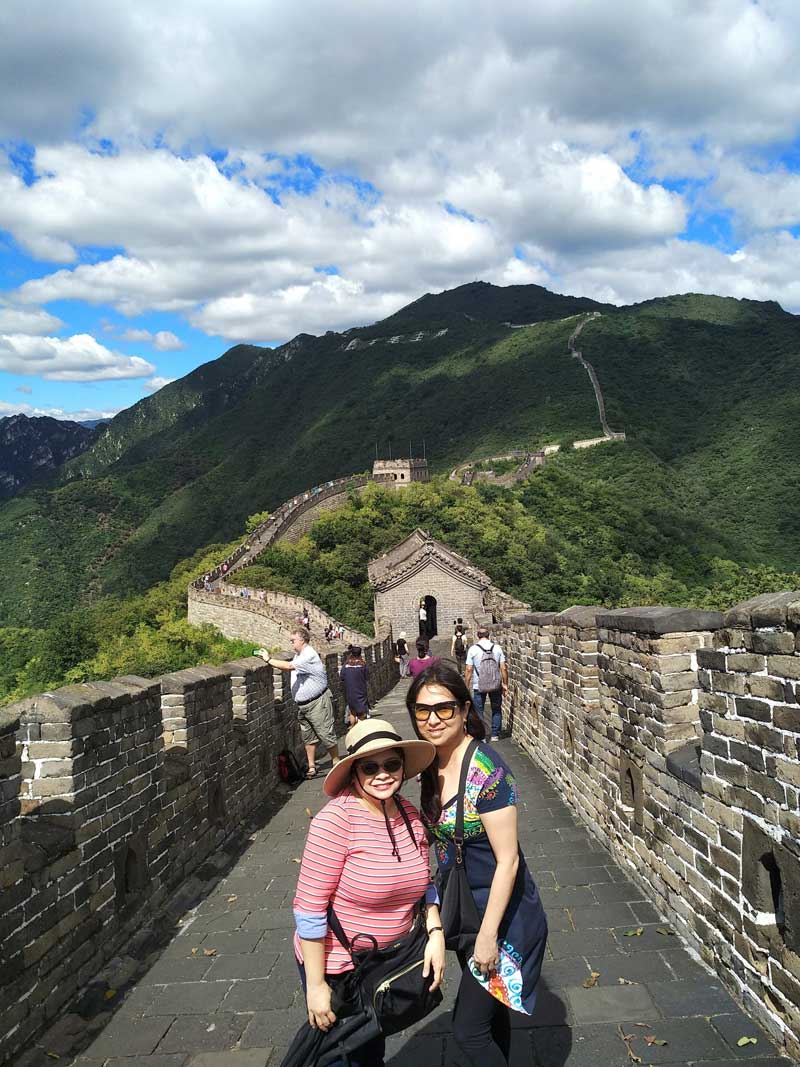
Reesa Tesoro-Guerrero and Christine Dayrit at the Great Wall
With a history of about 2,700 years, some of the Great Wall sections are now in ruins or have disappeared. However, the Great Wall of China is still one of the most appealing attractions all around the world owing to its architectural grandeur and historical significance.
It was at Mutianyu where we began our discovery of the Great Wall. A trip to Mutianyu wouldn’t be complete without a climb on at least part of the wall. There are two cable cars that will take you to the top of Mutianyu Great Wall. The view from atop the wall is mesmerizing; it feels like you’re soaring above thousands of centuries of history and going inside the genius of the people who built the wall.
We left Beijing with a promise to return for its food, shopping, history and culture. There is so much to see and do in this sophisticated city. Once you step into Beijing, you will want to savor its flavors again and again.



















